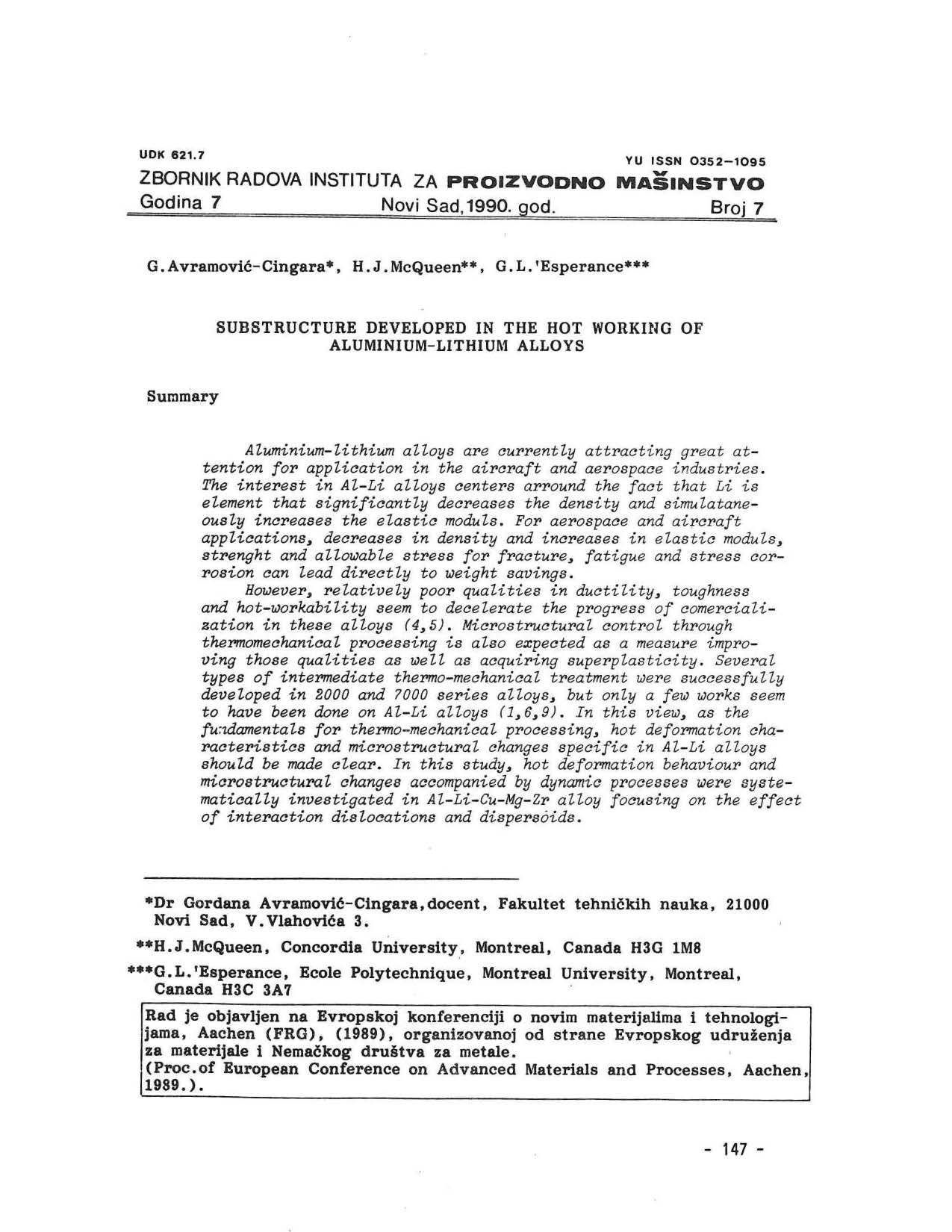
Published 1990-12-01
abstract views: 14 // FULL TEXT ARTICLE (PDF): 5
Keywords
- Aluminium-lithium,
- aerospace industries,
- fracture, fatigue, and stress corrosion
How to Cite
Copyright (c) 2023 Journal of Production Engineering

This work is licensed under a Creative Commons Attribution 4.0 International License.
Abstract
Aluminium-lithium (Al-Li) alloys have become a topic of significant interest for applications in the aircraft and aerospace industries. The appeal of Al-Li alloys is primarily centered around the fact that lithium (Li) is an element that substantially reduces density while simultaneously increasing the elastic modulus. For aerospace and aircraft applications, these reductions in density and enhancements in elastic modulus, strength, and allowable stress for fracture, fatigue, and stress corrosion can directly translate to weight savings. However, the relatively poor qualities in terms of ductility, toughness, and hot workability have somewhat hindered the commercial progress of these alloys. Microstructural control through thermomechanical processing is expected to address these shortcomings and potentially provide superplasticity. Several types of intermediate thermomechanical treatments have been successfully developed for 2000 and 7000 series alloys, but there has been limited research on Al-Li alloys. In this context, it is essential to establish the fundamentals of thermomechanical processing, including understanding the hot deformation characteristics and microstructural changes specific to Al-Li alloys. In this study, we systematically investigated the hot deformation behavior and microstructural changes associated with dynamic processes in an Al-Li-Cu-Mg-Zr alloy. The focus was on understanding the effects of the interaction between dislocations and dispersoids.

